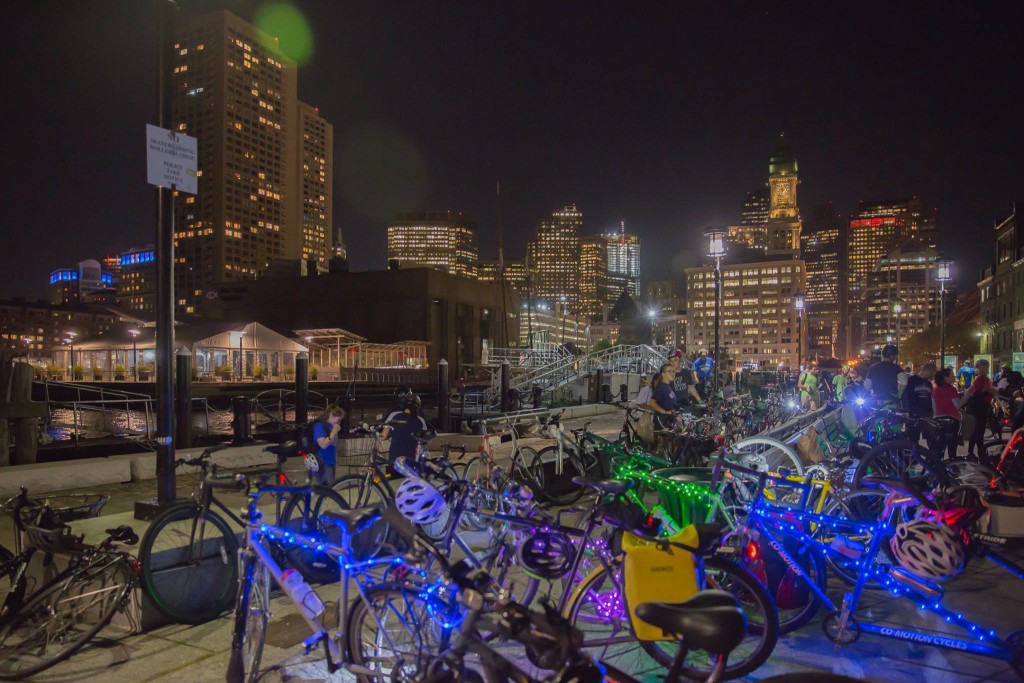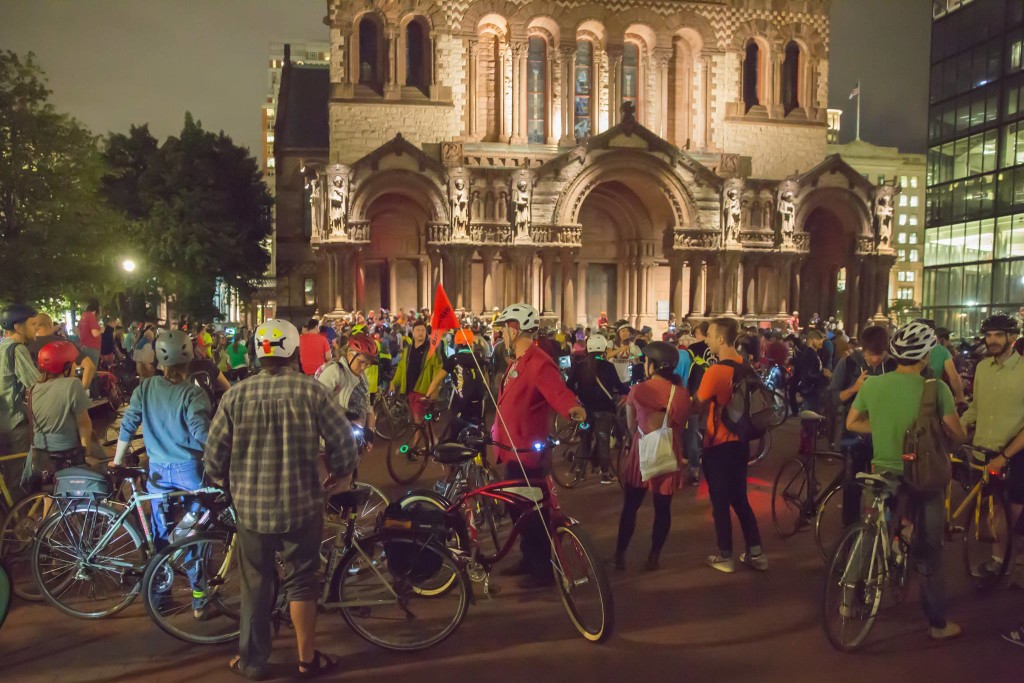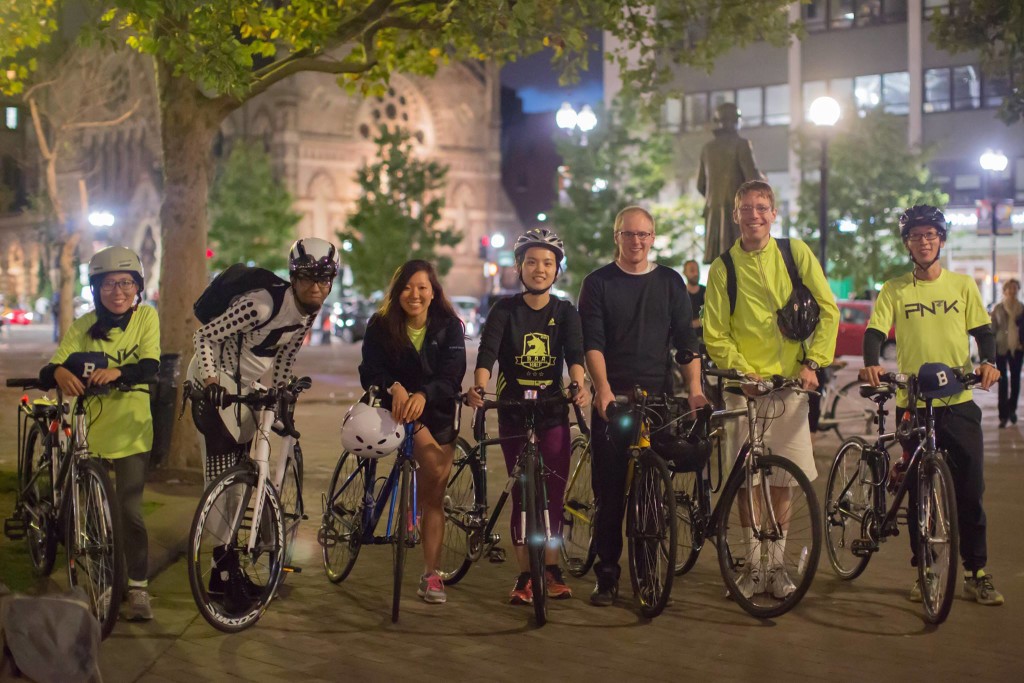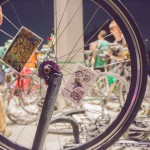
Have you ever met someone new and thereafter began to see his/her face everywhere all of a sudden? It's like working on bike safety - the more you dabble in this field, the more bikes you begin to see everywhere: on advertisements, commercials about relaxing, vacations, childhood memories, etc. Bikes somehow become omnipresent.
And you wonder how did you miss all this before?
When you see brain and cognitive science studies on attention, you begin to realize our limitations on perception. I've sat through classes (taught by Professor Aude Olivia - brilliant lecturer, highly recommended) where we watched an image for 30 seconds. At the end, we're asked to note the things that had changed. (What? Things changed? WHEN?) You then learn that the image had transposed into another: a person disappeared in photo 2, a banner gained stripes, colors changed, a lamp post moved, a building morphed! And you didn't notice a thing. It's humbling - And it's fascinating. As it turns out, we're all slaves to our brains and "nothing gets past you" isn't true.
Selective attention tests demonstrate that at any point, your perception of the world is based upon what your brain selectively decides to process; the perception is an amalgamation of still, selectively-processed snap-shots in time. How does the brain decide what to process? Various factors, one of which is familiarity. The more familiar a face is to you, the more it will stand out against others.
Now let's think about this in the context of bike safety: drivers will stop at red signs, obey standard red-yellow-green traffic lights, and look for green directional signs with arrows on highways. What cue triggers them to recognize a cyclist? To be honest, cyclists don't have much going on for them that would make them stand out; and that's why many of them wear bright green safety vests (scientifically the color that is most noticeable). That is why PN2K sells bright safety green t-shirts and bike lights for cyclists. You want to stay safe on the roads that lack proper bike infrastructure? STAND OUT. Have bike lights. Make motorists see you - if their minds cannot process your presence, they cannot react in time to dodge you or give you enough space.
The point of the above is not meant to persuade you to further investigate into the nuances of our brains (as interesting of a field as it is); it's so you can begin to relate, scientifically, to the fact that people's attentions are divided up, simply because there is an overwhelming amount of information to process in the world -- and this is a reason why accidents happen. The accident is never intended! (thus the term "accident") and not everyone is a demonic driver out to get you. In fact, some cyclists are also drivers! Keep that in mind when they honk in support of bike parties.
When cyclists are few, drivers might not be trained to notice cyclists; but when you put together 2 or 3 cyclists, their presence becomes more pronounced, as does their safety. As more and more cyclists become regular road users to the point where the numbers cannot be ignored, cycling will become safer as drivers become more aware of their presence.

Blobs or dog? Closure explains our tendency to take information and relate it to something with which we feel familiar and comfortable.

But what can you do now? Well, you can participate in advocacy groups, you can give cyclists loud horns and bells, make them do unusual tricks that capture attention (wheelies; unusually tall bikes; naked cyclists), raise hell, threaten to TP parliament -- or you can throw 500+ cyclists together in one large massive un-ignorable group and shout "BOSTON BIKE PARRRR-TY!"
I learned last autumn that some things can increase your safety more than helmets: (1) bike lights (2) more cyclists out on the road. The latter is pretty important, and BBP does an awesome job organizing and leading 500+ people from point A to point B. And that's why PN2K wants to help. We want YOU getting out there as well, no matter if you're a freshman, international student, temp transfer, a grad student who just learned how to ride a bike -- come out and join our bike convoy! Our convoys (bike groups) will leave from the MIT Student Center to and head to Copley Square at 6:45 PM* every second Friday of the month (*7:20 PM during the summer; please refer to our Events page calendar to be sure). Besides the fact that it's incredibly fun and empowering to bike alongside 500 other friendly cyclists in solidarity, learning a lesson about 'strength in numbers' is something you can acknowledge but not truly understand until you ride in a crowd where to your left and to your right, all you see are cyclists and more cyclists. Beyond that, it's also worthwhile to know the 3-4 people biking with you from PN2K who will welcome you happily and become your cycling family.

Click here to see PN2K's full photo album of "Boston Bike Party: Boston"
Resources:
"Ramblings on Psychology." 22 April 2015. Accessed on Sep 17 2015. <http://ramblingsonpsychology.blogspot.com/2015/04/what-you-see-isnt-what-you-get.html>
